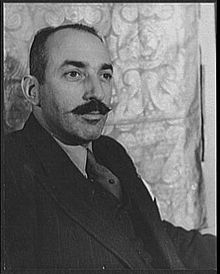 On October 1, 2015, Literary Hub published “The Life and Times of Alfred A. Knopf” by Chip McGrath, excerpted from a special edition history on the occasion of the company’s 100th anniversary. Since, as McGrath points out, Updike was “the last great acquisition of the Alfred era,” he is well represented.
On October 1, 2015, Literary Hub published “The Life and Times of Alfred A. Knopf” by Chip McGrath, excerpted from a special edition history on the occasion of the company’s 100th anniversary. Since, as McGrath points out, Updike was “the last great acquisition of the Alfred era,” he is well represented.
John Updike once compared Alfred A. Knopf to “a cross between a Viennese emperor and a Barbary pirate,” McGrath writes.
“[Knopf’s] correspondence was hearty and businesslike and seldom ventured to make editorial suggestions. (A good example is the letter he wrote to Updike in 1967 after reading Couples. He called the novel a ‘lollapalooza,’ and then shrewdly suggested that at his own expense Updike hire a lawyer in case any of Updike’s friends or neighbors thought they recognized themselves in the book. Updike, incidentally, was the last great acquisition of the Alfred era, and despite their age difference, the two men hit it off immediately, not only because Knopf happily picked up Updike’s first novel, The Poorhouse Fair—after Harper dithered over it for months, suggesting first one revision, then another—but out of a shared love of typography.)”
“I love books physically,” Knopf wrote in his 1917 catalog, and “in 1965, when Knopf celebrated its 50th anniversary and was widely recognized for its distinguished record, it was Alfred who got most of the praise. The Typophiles, an organization that encouraged the appreciation of fine typography and bookmaking, published a two-volume Festschrift in his honor, with tributes from writers like John Hersey, Paul Horgan, John Crowe Ransom, and Updike.
Photo: Carl van Vechten.
